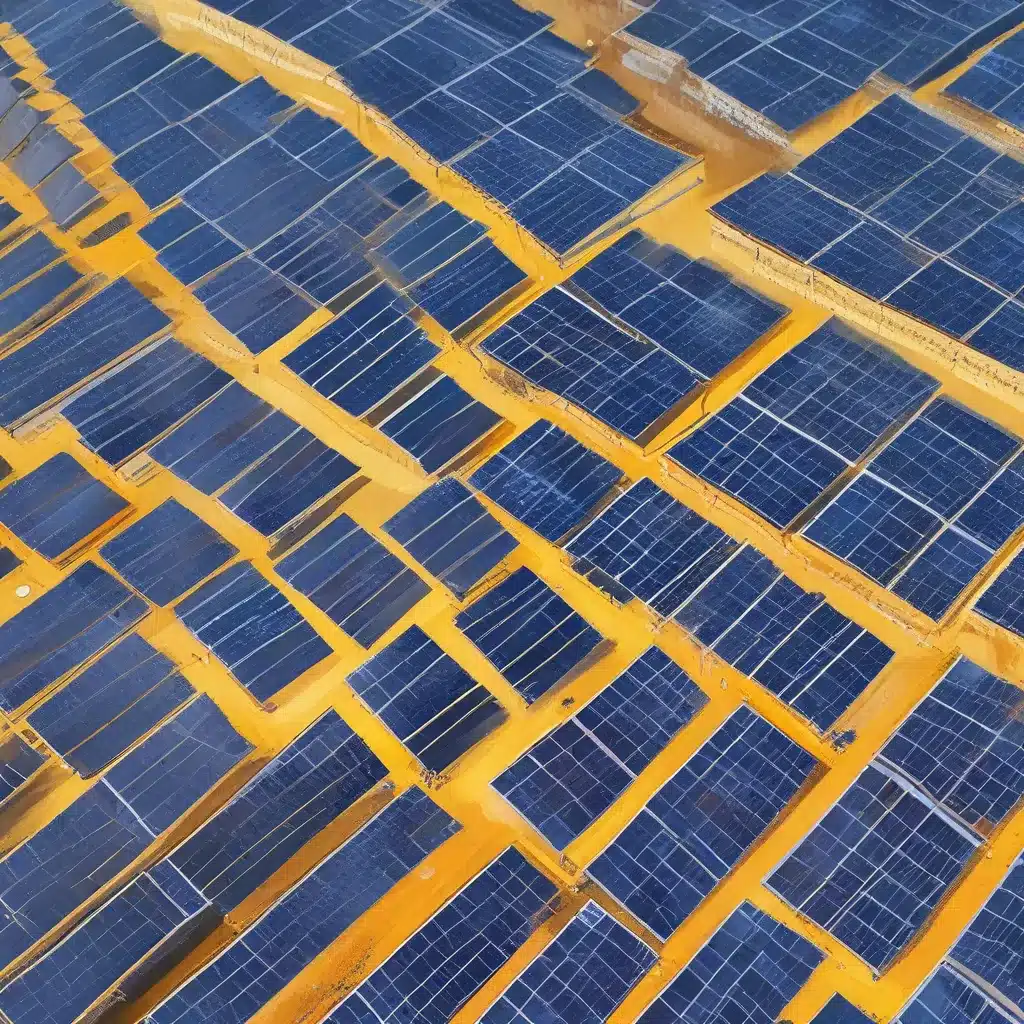
The Sun’s Shining Promise
Ah, the sun – our celestial friend that has been providing us with warmth, light, and the occasional sunburn for billions of years. But did you know that this mighty star is also playing a crucial role in our planet’s transition towards a clean energy future? As a solar energy enthusiast, I’m here to shed some light (pun intended) on how the sun is helping us power our way to a greener tomorrow.
Let’s start with the basics. Solar energy, in its most common form, is harnessed through the use of solar photovoltaic (PV) technology. These nifty electronic devices, also known as solar cells, have the ability to convert sunlight directly into electricity. According to the International Renewable Energy Agency (IRENA), the total installed capacity of solar PV reached 710 GW globally at the end of 2020, with around 125 GW of new solar PV capacity added that year – the largest capacity addition of any renewable energy source. That’s a whole lot of sunshine-powered electricity!
But solar energy isn’t just about solar PV. There’s also the impressive technology of concentrated solar power (CSP), which uses mirrors to concentrate the sun’s rays and generate steam to drive a turbine and produce electricity. By the end of 2020, the global installed capacity of CSP was approaching 7 GW, a fivefold increase between 2010 and 2020. While it may not be as well-known as its PV counterpart, CSP is making strides in the clean energy revolution, particularly with its ability to integrate thermal energy storage and provide electricity even after the sun has set.
The Cost-Effectiveness of Solar Power
One of the most remarkable aspects of solar energy’s rise is its dramatic cost reduction over the past decade. IRENA reports that solar module prices fell by up to 93% between 2010 and 2020, and during the same period, the global weighted-average levelized cost of electricity (LCOE) for utility-scale solar PV projects fell by 85%. That’s a mind-blowing decrease, making solar power not only affordable but often the cheapest form of electricity generation.
This cost-effectiveness has been a game-changer, democratizing electricity production and enabling the widespread adoption of solar technology. Solar PV systems now range in size from small solar home kits to rooftop installations of 3-20 kW capacity, all the way up to systems with capacity in the hundreds of megawatts. This diversity in scale has empowered individuals, communities, and businesses to take control of their energy generation, reducing their reliance on traditional fossil fuel-based power sources.
The Versatility of Solar Energy
One of the most remarkable things about solar energy is its sheer versatility. It’s not just about generating electricity; solar power can also be used for heating and desalinating water. This makes it an incredibly versatile solution, especially in regions where access to clean water is a pressing concern.
But the real beauty of solar energy lies in its modularity and flexibility. As IRENA points out, solar PV is highly modular, ranging from small solar home kits to large-scale utility projects. This means that solar energy can be tailored to meet the specific needs of a wide range of users, from individual households to entire communities and beyond.
And let’s not forget the environmental benefits of solar power. By harnessing the sun’s energy, we can generate electricity without the harmful emissions associated with traditional fossil fuel-based power sources. This makes solar energy a crucial component in the fight against climate change, as we collectively work towards a cleaner, more sustainable future.
The Challenges Ahead
Of course, the transition to a clean energy future powered by solar and other renewable sources is not without its challenges. According to the International Energy Agency (IEA), the shift to a clean energy system is set to drive a huge increase in the demand for critical minerals, such as lithium, nickel, cobalt, and rare earth elements, which are essential for technologies like solar PV, wind turbines, and electric vehicles.
This surge in demand poses significant risks to the reliability, affordability, and sustainability of mineral supply, which could potentially slow down the progress of clean energy transitions. Policy makers and companies must work together to address these challenges, as the IEA suggests, by “ensuring adequate investment in diversified sources of new supply, promoting technology innovation, scaling up recycling, enhancing supply chain resilience, and mainstreaming higher environmental, social, and governance standards.”
The Future is Bright
Despite these challenges, the future of solar energy looks incredibly bright. According to the IEA, solar power is one of the fastest-growing renewable energy technologies and is playing an increasingly important role in the global energy transformation. And as the cost of solar continues to plummet and the technology becomes more accessible, it’s clear that the sun’s shining promise will only grow brighter in the years to come.
So, if you’re looking to join the clean energy revolution, consider harnessing the power of the sun. Whether it’s through a rooftop solar installation, a community solar project, or investing in a solar energy company like Solar A Systems Inc, the opportunities to be a part of this exciting transition are endless. The future is bright, and it’s powered by the sun.


